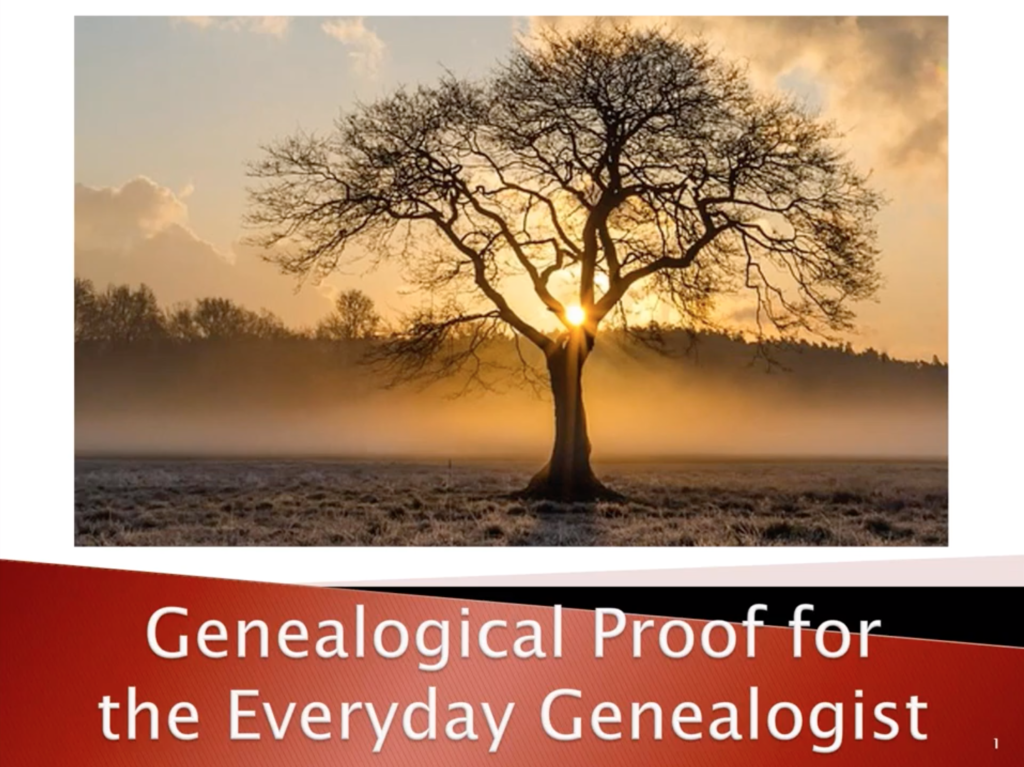
As a member of the Virtual Genealogical Association (VGA), we receive 3-4 webinars a month. I’ve gotten behind on them and after six months, you can no longer access them. I’m glad that I happened to sign in this morning to catch the webinar Genealogical Proof for the Everyday Genealogist by Annette Burke Lyttle before it went away as I very much enjoyed it.
I’ll be giving a similar presentation for Niagara County Genealogical Society (NCGS) in January on an introduction to the Genealogical Proof Standard (GPS).
I’d like to start blogging my notes and thoughts as I learn about new genealogy resources and techniques. I am constantly listening to podcasts and watching webinars that I don’t often slow down to reflect on and put into action the content. I think writing about it might help. So here are some of my notes from this wonderful webinar:
- The GPS is designed to help us feel confident that the information we attach to our trees is accurate and reliable. The GPS is for everybody – not just professionals.
- Similar to what Crista Cowan always says: “Have fun climbing YOUR family tree,” the GPS will help us not accidentally connect to branches that don’t belong in your tree.
- All evidence is not created equal and we need to determine the reliability and accuracy of the evidence that we find.
- You must start with a research question or you may waste a lot of time having fun, but not accomplishing much. The research question will help you develop a plan to determine what documents you should try looking for to help answer your question.
- Don’t be afraid if your research plan changes along the way due to what you uncover from the sources you find. I really like this reminder that your plan can be flexible.
- Writing a conclusion helps to explain to anyone else looking at our research (and ourselves – as I know that I often wondered how I came to the conclusion of a date or relationship on my tree. LOL) understand what we have concluded and how we arrived at that conclusion.
- The GPS is a method that will help us ensure that we find the most reliable information possible.
- Digital copies of records are treated as if it were the original as long as there is no evidence that it has been altered.
- You should try to take a derivative source and find the origin of the information so that you can see if there was information left out or recorded in error. I think it is also good to look at it in the context in which the original was created.
I particularly loved her explanation of how you can resolve any conflicts. This is something that I haven’t been too certain on and she gave three basic ways to resolve conflicts:
- Quantity and quality of evidence
- Quality of the evidence
- Reasoning
I haven’t yet finished reading Mastering Genealogical Proof and I bet that would help be further understand resolving conflicts. I have always felt scared to say with certainty that I felt a particular piece of evidence was more correct than another one. Now I have some more confidence to say that I came to my conclusion based on a thorough analysis and correlation of the information and when I compared the conflicting sources of information that this one is more likely to be correct.
More notes:
- Be sure when you write your conclusions that you lay out the research question and the evidence that lead you to the answer.
